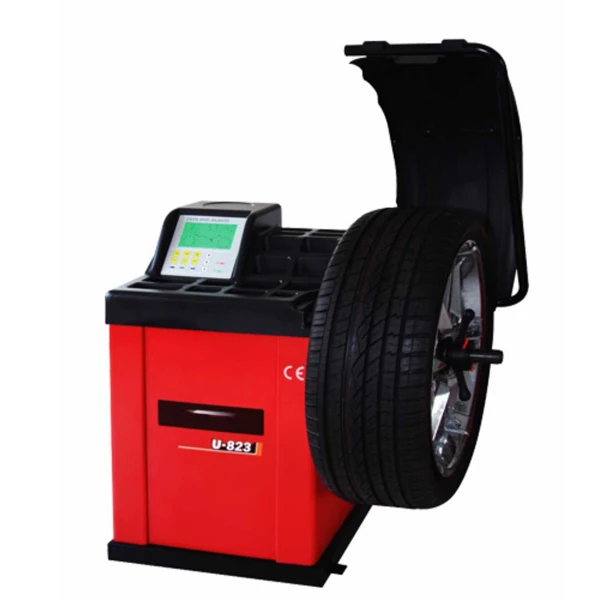Although clip-on wheel weights can outnumber adhesive wheel weights in tire stores, adhesive weights are growing in popularity and becoming a more important piece of a shop’s purchase goods.
Don Vanderheyden, director of marketing for Hennessy Industries Inc., manufacturer of Bada brand clip-style weights and adhesive wheel weights, estimates adhesive wheel weights make up about 40% of the aftermarket. Gregory Parker, national account sales manager and marketing director for North America at Wegmann automotive USA Inc., places the split at 35% adhesive weights and 65% clip-on weights. He acknowledges the use of adhesive weights versus the clip-on style in the aftermarket is increasing but cautions a rapid transition is not on the horizon.
“The market is always experiencing slow change,” Parker says. “For our segment of the industry the growth of adhesive weight usage is evident and is being driven by adhesive usage growth at the OEM level and the universal appeal of adhesive weight installation. But clip-on weights are not leaving the market anytime soon.”
The introduction of adhesive wheel weight automation in original equipment factories is contributing to the slow increase in adhesive weight usage as OEMs are slowly removing flanges from their rims altogether.
Wheel weight automation can feature standard steel segmented adhesive weights or continuous adhesive weights, made from composite materials, that are installed using robotic arms and large 300 to 400 pound rolls of product. Continuous adhesive weights are well-suited for automation and can be cut to the exact weight, within a fraction of a gram, necessary to balance a tire. However they are roughly two to three times more expensive than standard segmented steel adhesive weights.
There are several factors to consider when discussing the cost of wheel balance weights, according to Parker.
“Adhesive weights are typically lower in cost than clip-on weights for a few reasons,” he says. “Clip-on weights require more SKUs and are slightly harder to manufacture, which increase the cost.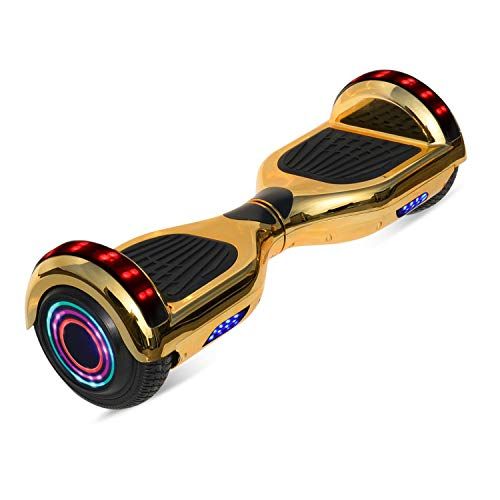 Adhesive weights are easier to manufacture and are higher output due to fewer SKUs, which help reduce the cost. However, adhesive weights and clip-on weights are all priced relative to their raw material (lead, zinc or steel) pricing, and both adhesive weights and clip-on weights have other factors like speed and efficiency to consider outside of cost when making decisions on what is right for the business.”
Adhesive weights are easier to manufacture and are higher output due to fewer SKUs, which help reduce the cost. However, adhesive weights and clip-on weights are all priced relative to their raw material (lead, zinc or steel) pricing, and both adhesive weights and clip-on weights have other factors like speed and efficiency to consider outside of cost when making decisions on what is right for the business.”
More accuracy Is required
The popularity of flangeless alloy rims is also pushing the use of adhesive weights upwards. Consumers do not want to see a wheel weight on the outside of the wheel. A clip-on weight can be placed on the inside flange, but the only option for the outside plane is an adhesive weight. Technicians can balance the wheel using clip-on weights and adhesive weights, or two adhesive weights.
“When you get rid of that outer clip weight for cosmetic reasons, the weight planes, or the separation between the two weights, are narrower,” says Greg Meyer, wheel balancer product manager at Hunter Engineering Co.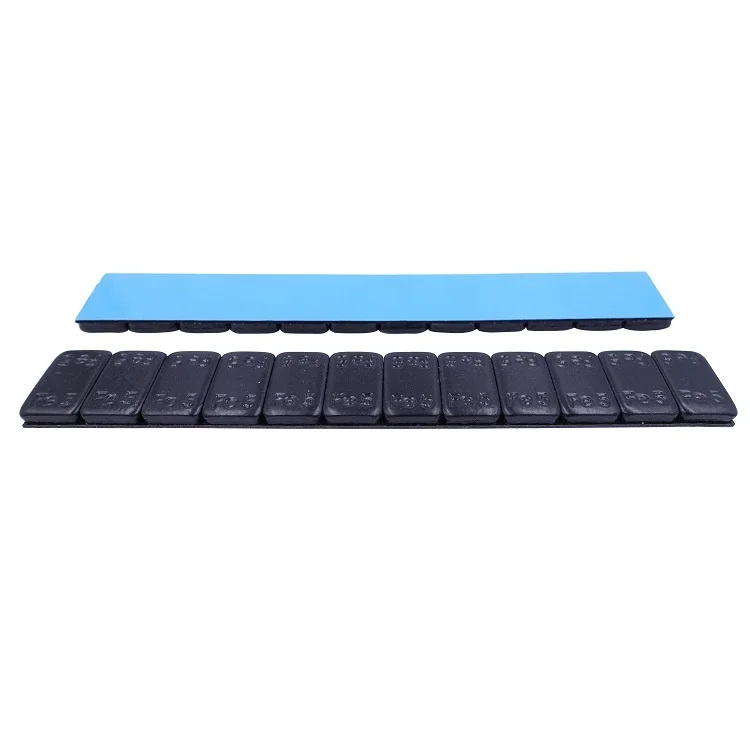 “The best placement would be at the extreme inside and outside of the wheel.” The farther apart the weights, the more “couple” force, or the side-to-side wobble of a rolling tire, can be counteracted.
“The best placement would be at the extreme inside and outside of the wheel.” The farther apart the weights, the more “couple” force, or the side-to-side wobble of a rolling tire, can be counteracted.
“We’ve lost the outside and two or three more inches because the weight has to be behind the spokes. When those weight planes get closer together, the amount of weights that are required goes up and the precision with which they’re placed also has to go up,” he says.
Adhesive weights require both the balancer and the technician to be more accurate. “He’s got to be more careful and more cautious or he runs the risk of having to peel them off and try again or doing a bad job and having an unhappy customer with a vibration complaint,” says Meyer.
One of the latest trends in custom wheels is extremely thin spokes that curve and blend into the barrel of the rim rather than stop at the barrel. The spoke style creates high and low spots in the rim, which complicates the balancing job for the technician.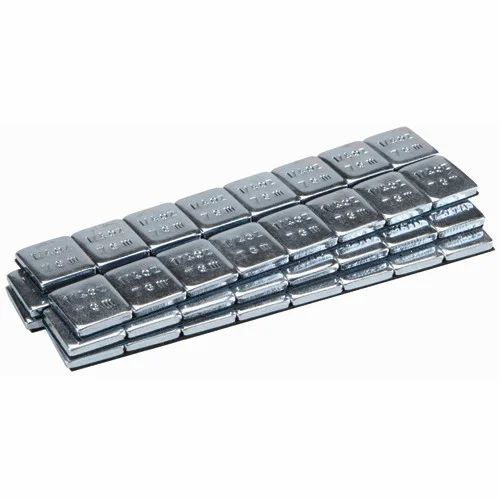 The design requires the weights to be placed just three or four inches apart.
The design requires the weights to be placed just three or four inches apart.
“The weights would rapidly start getting very large and difficult to compensate for the imbalance,” says Meyer. “The trend is definitely there for the tire dealer and more so for the aftermarket people who are dealing with specialty custom rims. Sooner or later everyone is going to see some crazy example of this.”
Bigger wheels also create wheel weight challenges. Although bigger wheels should be easier to balance because they are wider and have larger diameters, consumers do not want to see the weights.
“The reality is that bigger wheels are more appearance-focused. There’s almost never an outer weight installed on a wheel larger than 20 inches because the guy buying 20-inch wheels would never allow it,” says Meyer.
Balancers evolve
Balancers have become more helpful to technicians. Advancements enable a technician to place the correct amount of clip-on or adhesive weight exactly where needed.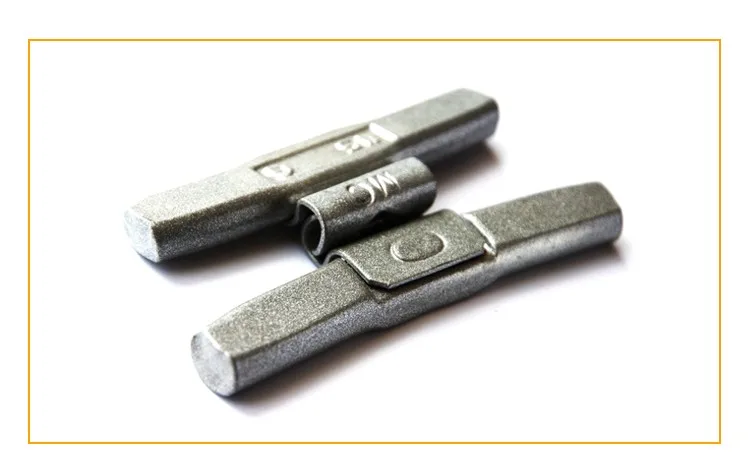
Meyer says Hunter’s patented SmartWeight technology gives technicians the simplest solution with the least amount of weights that are fastest to apply. The speed and simplicity of placing wheel weights are side benefits of SmartWeight. The technology provides a better overall balance by focusing on the up and down static forces that are most likely to be felt by the driver while keeping the couple (wobble) forces in check, adds Meyer.
Hennessy Industries’ Vanderheyden suggests dealers consider advances in technology that make it easier and faster to install wheel weights when purchasing new equipment. Features such as the ability to lock the wheel in place, lasers to pinpoint the weight’s exact location and lighting to illuminate the barrel of the wheel are available on advanced models such as the Coats 1600 wheel balancer.
The additional technologies make the balancing process easier, faster and more accurate, which helps offset the time and steps required to install adhesives weights compared to clip-on weights.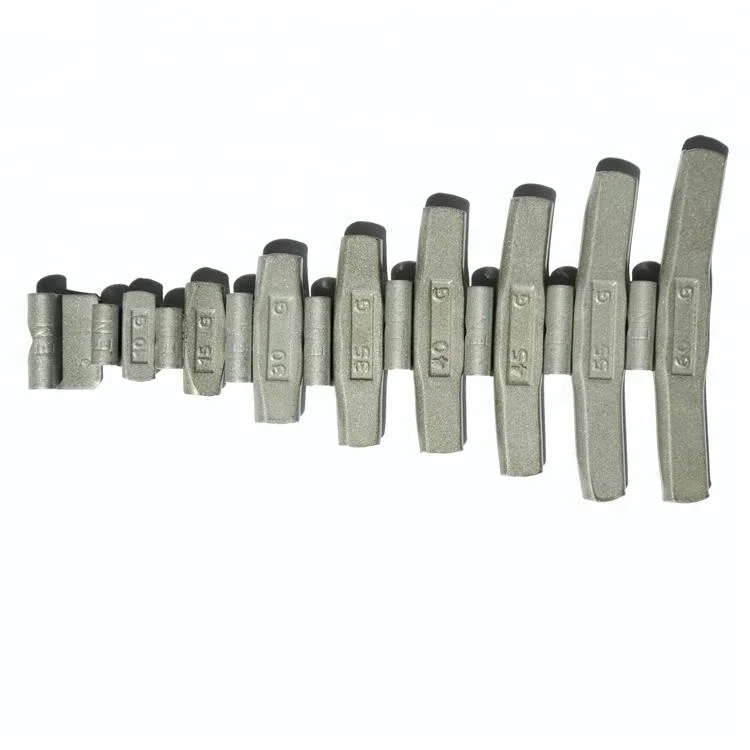 In order for an adhesive weight to stick to the wheel, the area where it will be attached must be cleaned with a solvent and dried first, which adds time to do correctly. Clip-on weights do not require the wheel to be cleaned and are much faster to install.
In order for an adhesive weight to stick to the wheel, the area where it will be attached must be cleaned with a solvent and dried first, which adds time to do correctly. Clip-on weights do not require the wheel to be cleaned and are much faster to install.
Cleanliness counts
Advancements in balancing equipment allow technicians to be faster and more efficient when installing clip-on and adhesive weights. Other efficiency improvements are coming from wheel weight packaging and inventory management, according to Parker. He notes tire stores are becoming aware of a cleanliness standard that is used in manufacturing settings called 5S. The 5S organization method is a process designed to keep the workplace in a clean condition.
“Tire retailers in the 21st century are understanding that high-level shop efficiencies are necessary in order to compete in today’s competitive landscape. Inventory management systems, faster reordering tools, and 5S cleanliness standards help technicians worker smarter, not harder,” he says.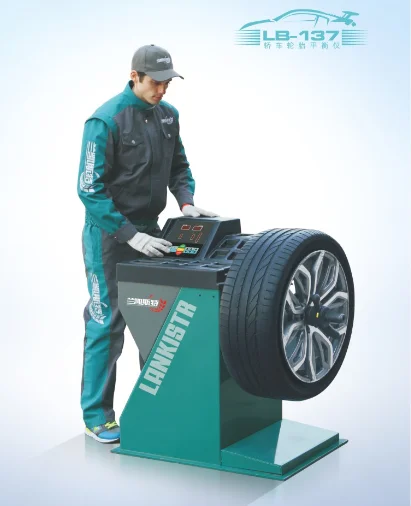
Wegmann’s Hofmann Power Weight brand has developed a racking system for wheel weight inventories that allows technicians to get to the product faster.
“We are introducing our Hofmann Power Weight SpeedRack, which delivers a wheel weight inventory solution that holds all the inventory in the shop, features front opening boxes to ensure a clean receptacle every time a new box is opened, and front mounted bar codes to make Warehouse Management System reordering easier,” says Parker. “It is no longer just about the weight, as suppliers must also enhance the offering surrounding the product itself.”
Ninth state bans lead
The use of lead wheel weights has been banned by nine states. The latest ban was passed by New Jersey in January 2018. The other states are Washington, Maryland, California, Illinois, Maine, Vermont, Minnesota and New York. Sources of lead-free wheel weight alternatives like zinc and steel include the Bada, Perfect Equipment, Plombco and Hoffman Power Weight brands. Plombco also offers a steel core wheel weight encased in a plastic shell called Plasteel. ■
Plombco also offers a steel core wheel weight encased in a plastic shell called Plasteel. ■
Balance is the key to everything. And this holds true even for your beloved vehicle. After all, who wants an unbalanced car going haywire on the roads? Since the body of your car never touches the ground.
The major task of balancing your vehicle while on road is on the wheels. Since an unbalanced wheel can lead to disorientation, shaking, and a reduction in mileage, correct wheel pressure and balancing is highly important.
But due to uneven and continues wear, your tires are likely to go out of balance every few months. In such a situation it is crucial to balance them out. And the best way to do that is by using Tyre weights. But before you get them fixed, read on to know why they are so important.
Why do you need wheel balancing in the first place?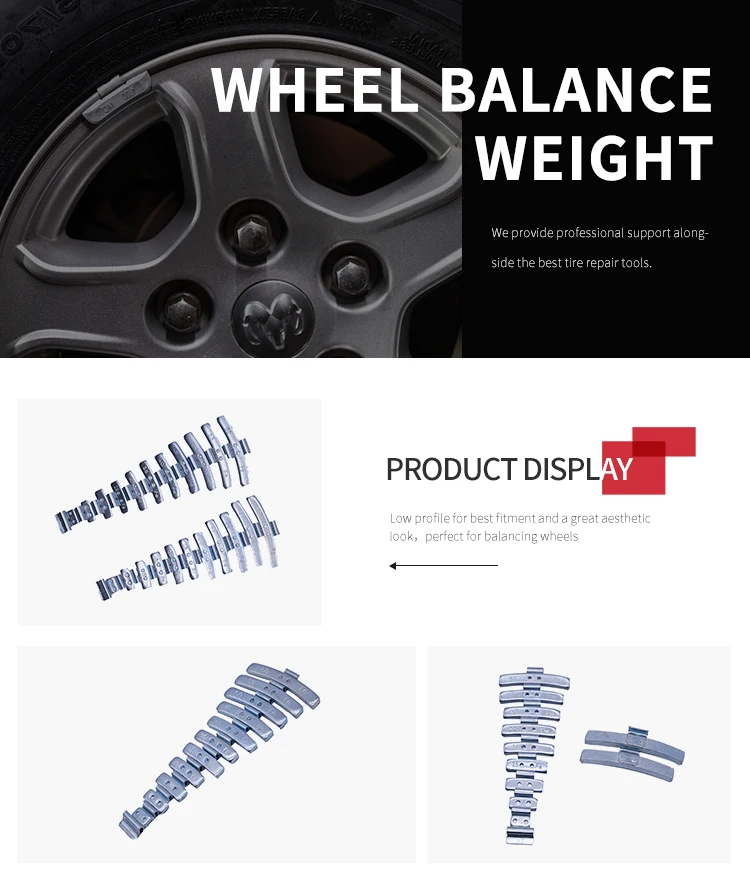 They are in a constant connection with the roads along with undertaking braking and acceleration loads. Therefore, wheels play an integral role in the overall dynamics of the car.
They are in a constant connection with the roads along with undertaking braking and acceleration loads. Therefore, wheels play an integral role in the overall dynamics of the car.As the name suggests, “wheel weight” is a component used to balance a wheel and tyre assembly. Made from malleable metals such as polymer-coated zinc and steel. Wheel weights are attached to your tyre to counteract their combined imbalance. By using wheel weights, the overall weight distribution of your wheels is evenly matched to tackle any kind of imbalance. Since balanced tires help save fuel, preserve tire life, and improve overall safety and comfort.
By using wheel weights, the overall weight distribution of your wheels is evenly matched to tackle any kind of imbalance. Since balanced tires help save fuel, preserve tire life, and improve overall safety and comfort.
The primary objective of wheel weights is to provide balance. But doing so can be achieved by two major methods. The first is by using clip-on weights. And the other is by using an adhesive weight.
As evident from the name, clip-on wheel weights are used by clipping them on to any part of your rim. Clip-On Wheel Weights can be placed both on the inside and on the outside of your rim. Once placed in a precise location, a Clip-On wheel weight adds to the overall weight of your tyre.
The major advantages of using Clip-On weights are:
The major disadvantages of using Clip-On weights are:
Unlike Clip-On wheel weights, adhesive wheel weights are sticker like wheel weights that are fixed on the inside of a rim.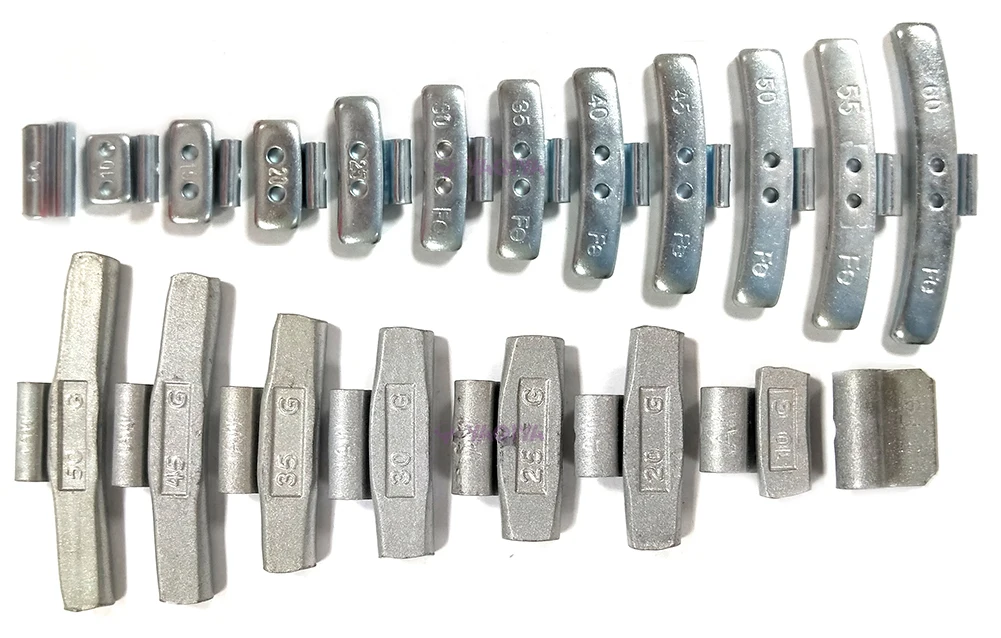 Adhesive weights can be firmly applied both on the inside and outside of your rim without leaving any scratches/stains. Once attached to a particular location, adhesive wheel weights largely contribute to balancing out your tyre.
Adhesive weights can be firmly applied both on the inside and outside of your rim without leaving any scratches/stains. Once attached to a particular location, adhesive wheel weights largely contribute to balancing out your tyre.
The major advantages of using an Adhesive weight are:
The major disadvantages of Adhesive weights are:
Wheel balancing is among the top three services provided by tyre dealers. Most tyre technicians know the importance of balancing and can provide a professional service to do so. However, balancing a wheel requires knowledge, and experience to precisely fit in tyre weights. In proper hands, a balanced wheel can resolves issues of decreased mileage, wobbling and steering vibrations. Thus, by choosing professional tyre services from Go Mechanic you can indulge professional and seamless experience.
Thus, by choosing professional tyre services from Go Mechanic you can indulge professional and seamless experience.
Also Read: How To Choose The Right Tyre For Your Vehicle?
Also Read: 7 Reasons Why Driving With Worn-Out Tyres Is A Bad Idea
In each machine, the centers of the wheels do not coincide with the main axle, forming an eccentricity. This is due to the different thickness of the tire along the contour, the weight of the spool, which is added to the wheels. In the process of driving, an imbalance is formed when the wheel enters the pit (the disk is deformed), uneven wear of the rubber. Imbalance can result from thick dirt sticking to the disks in winter, poor tightening of the bolts when installing the wheel, absence or loss of the arch support. Even repair sealants used for internal sealing of punctures that have formed can be unevenly placed on the rubber.
Imbalance can result from thick dirt sticking to the disks in winter, poor tightening of the bolts when installing the wheel, absence or loss of the arch support. Even repair sealants used for internal sealing of punctures that have formed can be unevenly placed on the rubber.
Fans of low-profile tires are most often threatened by radial or axial distortion of the disk. Balancing weights are lost in the pits. Since wheel balancing occurs as an assembly, when the tires are removed from the rims, it is lost.
After seasonal "changing shoes" after 1000-2000 km, some imbalance appears, resulting from shrinkage and lapping process in tires. And after 5000 km, you can safely go to the service station to perform balancing due to uneven tire wear.
When balancing, the mass of the wheels is balanced with respect to the center of rotation, as well as the elimination of the beating along the axis (so that the wheel does not try to rotate about the selected axis).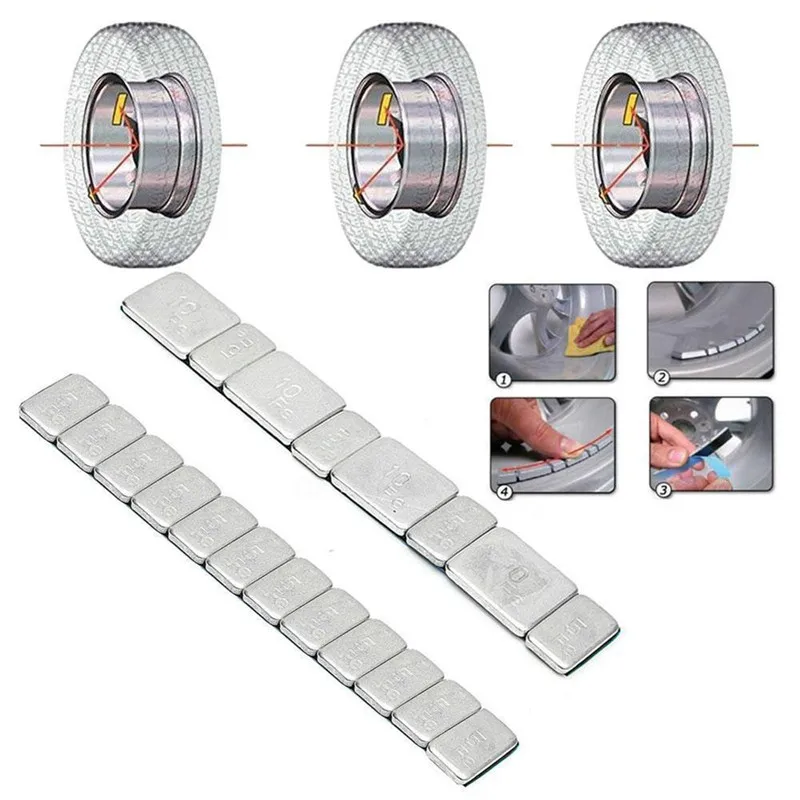
In the factory, it is impossible to make tires completely uniform in thickness with the same weight distribution. Balancing helps correct initial and acquired deficiencies. A "non-tuned" wheel increases the shock load on the car's ride, destroys the suspension and gives accelerated tire wear.
Driving at speeds over 80 km/h helps identify the problem. The front wheels begin to give out a "shot" with a return to the steering wheel. And if the disk is curved, then such a cannonade begins already at a speed of about 50 km / h. The rear wheels also need balancing, but this is less felt when driving than on the front tires.
For balancing, the wheel assembly is mounted on the machine and centered with a special cone. Depending on the given characteristics of the wheel on the stand, the computer checks where and how much weight of the load should be added.
For forged and cast wheels, rammed weights are selected.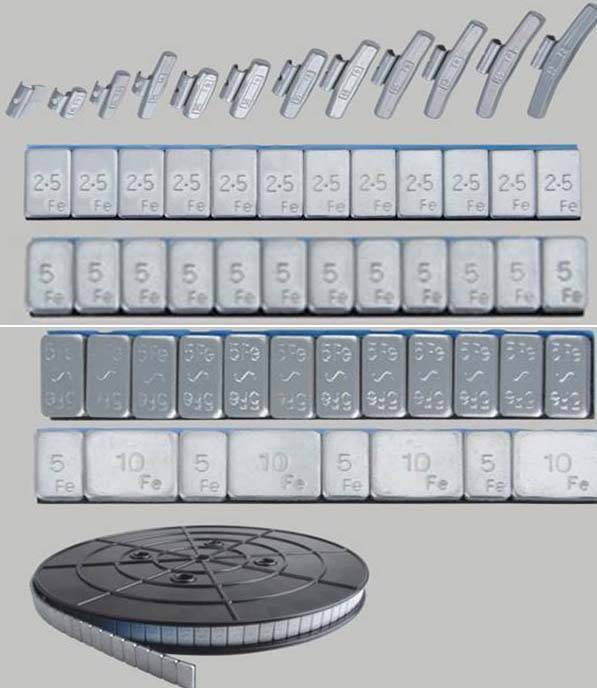 For those who want to preserve the aesthetics of the wheels, weights that are glued on the inside are offered. A stuffed weight is considered to be of better quality than Velcro that falls off when washing wheels or in the offseason. But for some models of discs, only adhesive weights are installed.
For those who want to preserve the aesthetics of the wheels, weights that are glued on the inside are offered. A stuffed weight is considered to be of better quality than Velcro that falls off when washing wheels or in the offseason. But for some models of discs, only adhesive weights are installed.
2. If you have to attach a larger weight, first you need to figure out why this is required. Either the disk is bent, or the tire is flattened, or the assembly was inaccurate (according to the rules, the yellow pointer on the rubber should match the valve).
Is it better to do balancing: through the central hole or through the points where the wheel is attached to the hub? There is no majority consensus on this matter. The Havek method is based on double wheel alignment. First, it is made along the central hole (for alloy wheels, the cone is replaced by a collet adapter). Then the second type of alignment occurs, when the disk is attached to the stand with a flange adapter that simulates the operation of the hubs.
The Havek method is based on double wheel alignment. First, it is made along the central hole (for alloy wheels, the cone is replaced by a collet adapter). Then the second type of alignment occurs, when the disk is attached to the stand with a flange adapter that simulates the operation of the hubs.
The final balancing offered in the tire centers will by no means replace the standard one. The device is designed for simultaneous balancing of the hub, disc and wheel. Only 15 g of weights are allowed with this method in order to even out the unevenness of the mass (with normal balancing - 60 g). That is, those who want to check the static operation of the node can do this after going through the usual balancing.
Another balancing method has been developed - the use of special granules that roll along the internal rubber channel, correcting the distribution of the additional mass.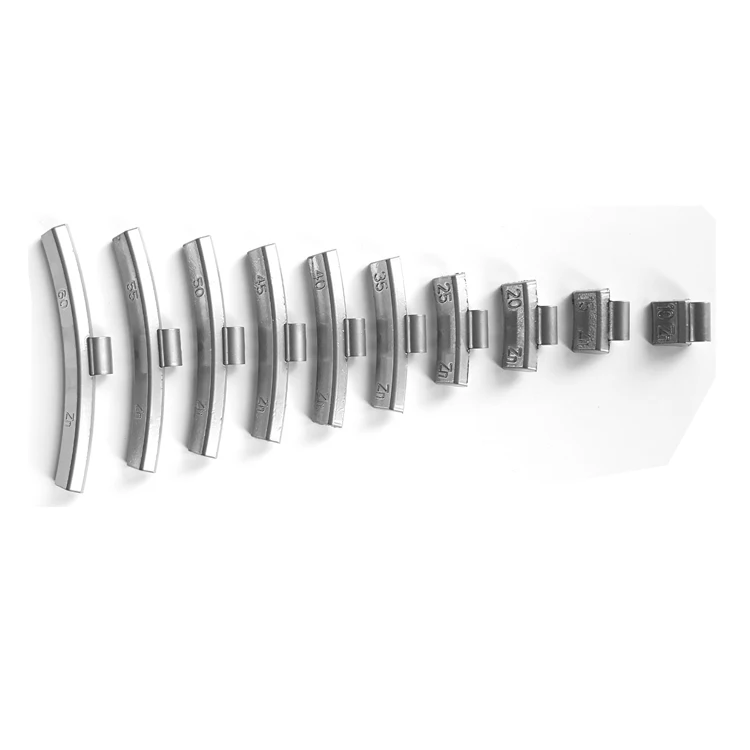
This method is considered more progressive and in demand, since the granules are filled only once and their work is enough for the entire life of the tire. They are not lost, like weights, and are not combed while inside.
The method is simple, but it has not received much popularity yet due to the high cost of the balancing service.
Violation of the balancing technology sometimes reduces this procedure to almost zero. But the money has been paid, and the driver has the right to demand a quality process.
What mistakes are allowed by car service workers:
 Old weights are dismantled. And only after that proceed to the main balancing.
Old weights are dismantled. And only after that proceed to the main balancing. In order not to get a defective balance, watch the actions of the tire changers. An experienced and conscientious master will always offer the client to look at the diagnostic data on the display of the stand, and in order to prove the quality of the balancing performed, he will start the machine again.
Automotive plants produce stands equipped with precise electronic devices. They can balance up to the maximum speed the tread is designed for. But such machines are expensive, although balancing services at such service stations are not very different from poorly equipped stations.
They can balance up to the maximum speed the tread is designed for. But such machines are expensive, although balancing services at such service stations are not very different from poorly equipped stations.
We recommend you, dear drivers, to sign up for balancing on modern, high-precision equipment. A small cash surcharge compared to conventional balancing is fully offset by confidence and safety on the road. And what can be more important for a person than their own health and life?
Author: Kirill Savchenko
The modern car owner does not particularly go into the wheel balancing process.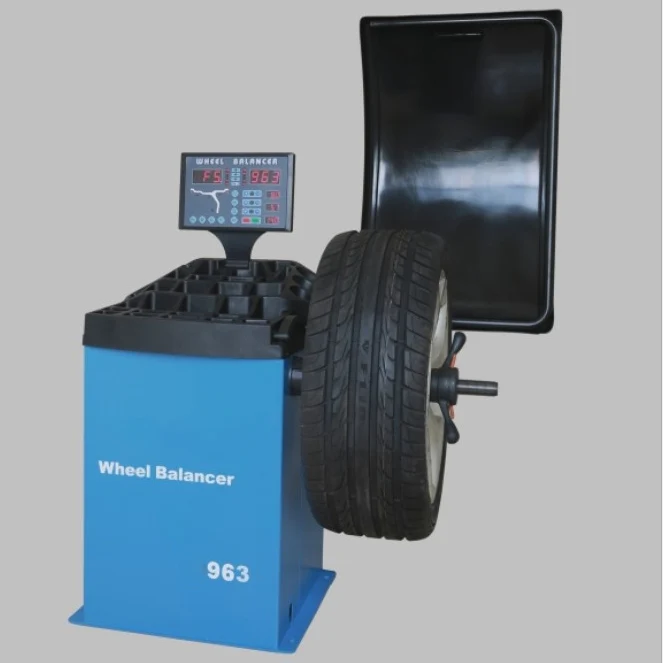 He perceives it as a kind of obligatory procedure for seasonal change of shoes and does not even realize how important its quality is.
He perceives it as a kind of obligatory procedure for seasonal change of shoes and does not even realize how important its quality is.
In fact, the effects of an imbalance in a rotating body can be seen at home. Try tossing your sneakers into the washing machine and spinning it. The imbalance that appears in the drum will cause it to beat, and with an increase in speed, the washing machine will rumble and shake. Something similar happens with a car whose wheels are out of balance.
Suspension and wheel bearings, steering elements, even with an imbalance of 10-15 g, receive thousands of beats per minute with an amplitude of 0.1-0.3 mm. They may be imperceptible to the driver, but act like a concrete hammer. Inexorably destructive. In addition, the imbalance increases tire wear and makes it uneven.
Taking into account that the unbalance will be different on each of the wheels, then when driving at high speeds, the car becomes less stable. It is harder to manage, and on a slippery or wet road, the situation can completely get out of control.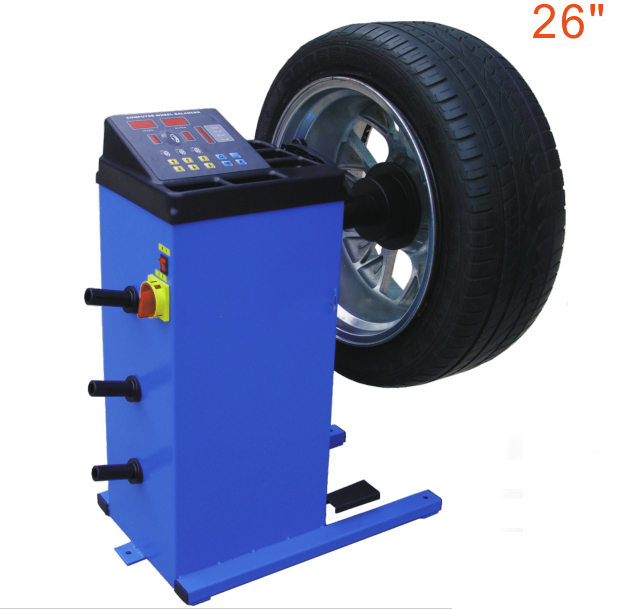
So, imbalance appears when the center of mass of the wheel does not coincide with the axis of rotation. It would seem that this cannot happen on absolutely new tires or disks, because they are made in compliance with all technological requirements.
Yes, it is, but in any case, the tire does not come out perfect during the manufacturing process. Some of it may be a little thicker and heavier, some thinner and lighter. We are talking about millimeters and grams, which simply cannot be determined. After mounting on a disk, which is also not ideal due to the same technological reasons, a single structure is obtained that has a common center of mass. That is why the wheel is balanced as an assembly.
If it were a conditional thin disk, then the balancing would be only static. In this case, it is enough to balance the opposite centers of mass: the minimum and maximum. But a car wheel is wide, and therefore it needs dynamic balancing, on the outside and on the inside.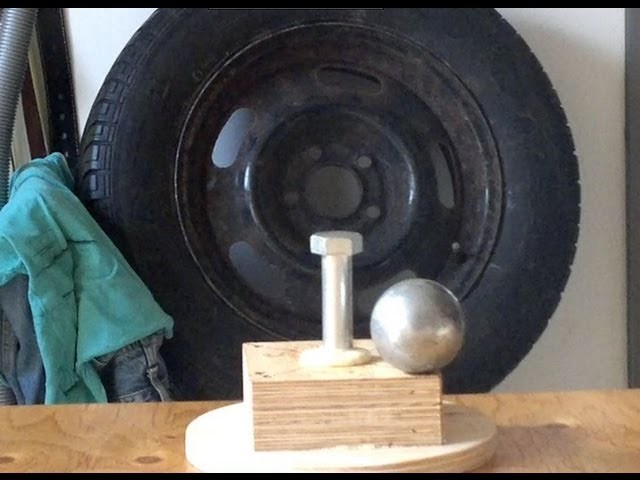
This is done with the help of special lead or zinc balancing weights weighing 5-60 g. On stamped discs they are fastened with steel clips-latches, on alloy wheels - with self-adhesive strips. It is impossible to correct the imbalance on your own. For this, special balancing machines are used.
They vary in design, from the simplest to those equipped with laser sensors. The latter allow you to determine not only the imbalance, but also the curvature of the disk or the violation of its geometry. In this case, the owner will be offered to repair the disc or may be denied balancing due to its impossibility.
But even the presence of such a machine in the tire shop will not give any guarantee that the wheels of your car will be balanced correctly. Firstly, the machine must be fixed on a solid, better concrete base and stand strictly horizontally.
Secondly, it is necessary to enter the correct data on the size of the tire and disk into its electronic unit, and the machine itself must not have wear in the rotating elements and be calibrated.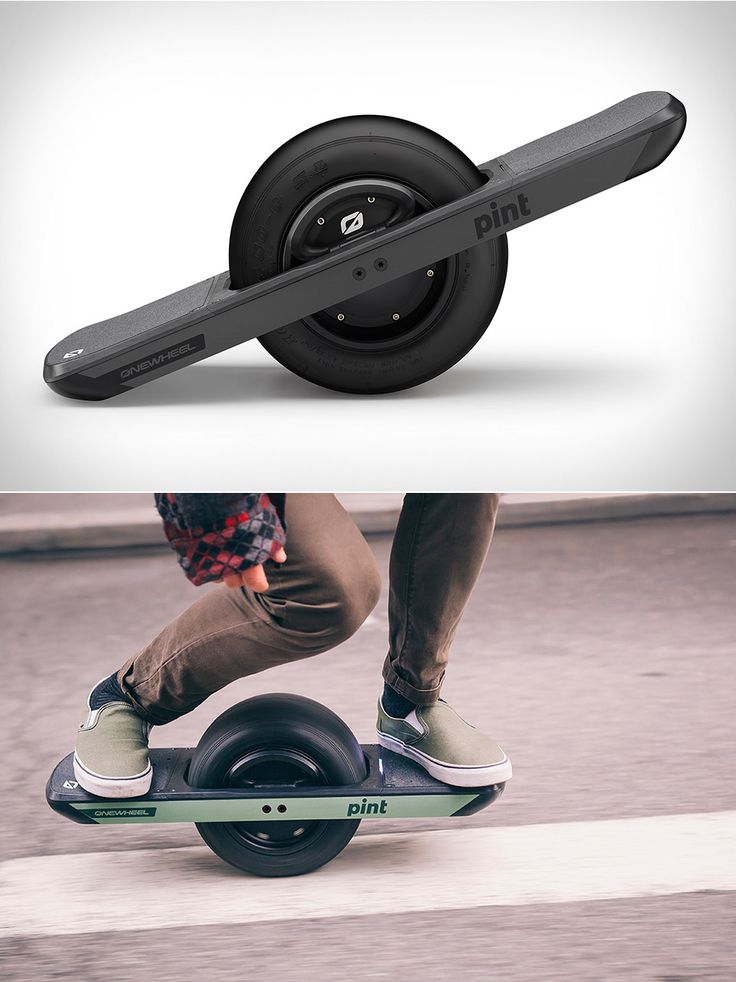 Finally, the master must have the appropriate qualifications and experience - as practice shows, 90% of success depends on this factor.
Finally, the master must have the appropriate qualifications and experience - as practice shows, 90% of success depends on this factor.
For example, if a wheel requires a significant amount of weight, he should know that turning the tire around the rim can reduce the imbalance and less weight will be needed. True, not everyone follows this rule, and here's why.
Changing the position of the tire relative to the rim in order to reduce the mass of weights required for balancing does not always lead to the desired result (the result is not known in advance!).
At the same time, labor costs for balancing and, as a result, its cost increase significantly. At the same time, a very large amount of cargo on the wheel may indicate a low qualification of the worker. On the other hand, automakers do not specify the maximum mass of weights used for balancing.
Ceteris paribus, the mass of weights required to compensate for unbalance will be minimal if they are installed at the maximum distance from the center of mass of the disk-tire system, i.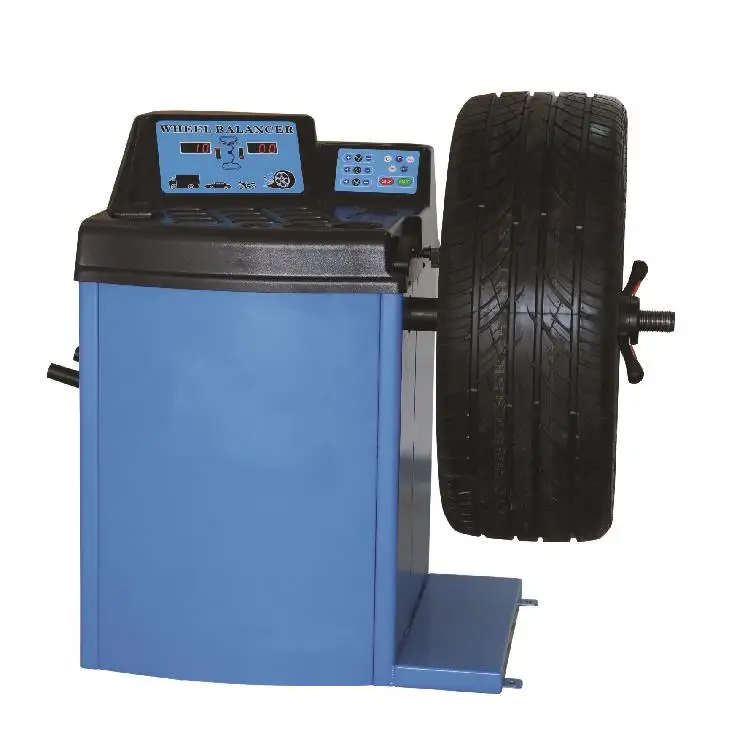 e. on the bead flanges.
e. on the bead flanges.
Installing weights closer to the center of mass of the "disc-tire" system (for example, in order not to spoil the appearance of the disk, an adhesive weight is placed on the inner surface of the rim) will inevitably lead to the need to increase their mass.
Also, the master must clean the tire from the smallest stones in the tread, and the wheel from adhering dirt. In case of deformation, be sure to inform the owner.
One of the most important things is mounting the wheel on the machine. In most cases, it is attached through the central hole of the disc. From the back, the wheel sits on a cone, and from the front it is fixed with a flange adapter and a clamping nut. This method increases the speed of the balancing process, but does not always provide perfect alignment.
Special Haweka adapters help improve this. Their essence is that the wheel is clamped on the machine through the holes for the wheel studs. At the same time, the probability of damaging the paintwork of the rim is minimal.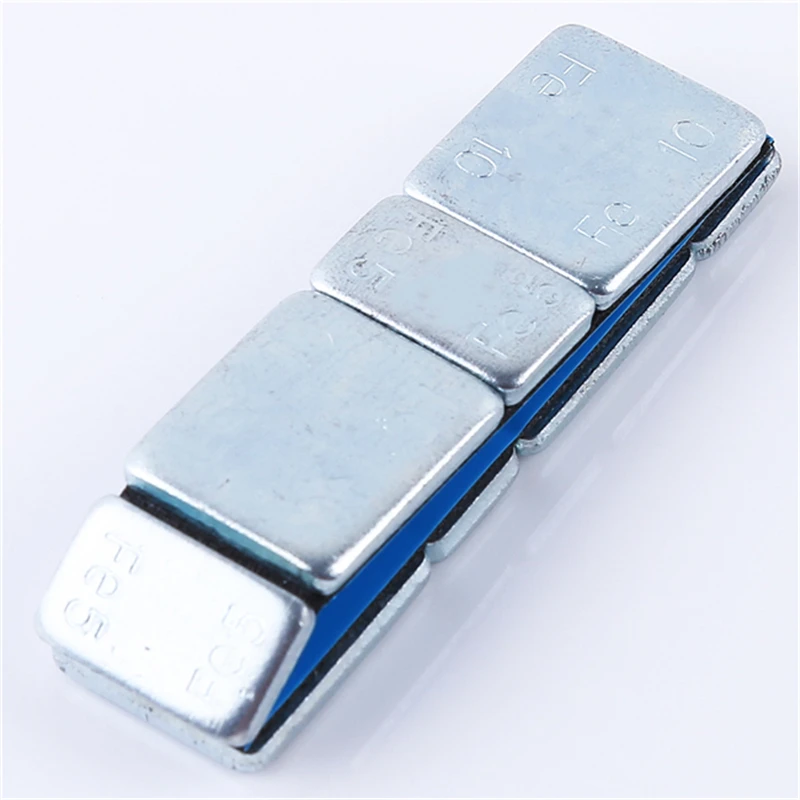 In addition, the adapter imitates an almost exact fit of the wheel on the hub and even the required tightening torque. In this case, the balancing accuracy will be higher. Flange adapters are available for various bolt patterns and can be used on any balancing machine.
In addition, the adapter imitates an almost exact fit of the wheel on the hub and even the required tightening torque. In this case, the balancing accuracy will be higher. Flange adapters are available for various bolt patterns and can be used on any balancing machine.
After installing the weights of the desired mass in the places indicated by the machine, the verification procedure is carried out again. If necessary, weights are either added or removed, but their weight should not exceed 5 grams. The wheel is considered balanced if the readings on the instrument panel are zero.
So when and how often is wheel balancing necessary? As a rule, in the manuals for the operation of cars, balancing is recommended every 10-15 thousand kilometers. But this is provided that the wheels were not disassembled.
That is, if the same wheels are used during seasonal tire changes, balancing is required. It is also necessary if the car has driven several thousand kilometers on bad roads or there have been cases of a wheel falling into a hole.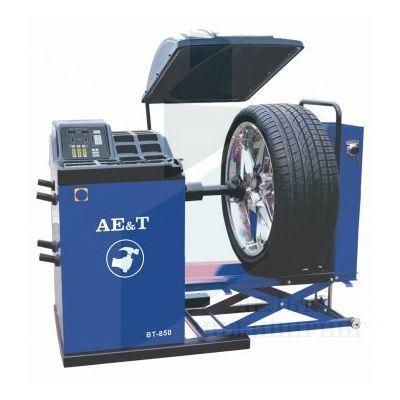 But in this case, not one wheel is balanced, but a pair standing on the same axle.
But in this case, not one wheel is balanced, but a pair standing on the same axle.
Commentary of a SHINSERVICE specialist
Alexander Golubev
SHINSERVICE expert
Many drivers make a mistake when vibrations appear in the car, starting with a suspension overhaul or replacement of power unit pillows. The first thing you should pay attention to is the cleanliness of the wheels and tires. Unevenly distributed adhering mud, snow, ice, tar stuck to the tire tread after driving on a road section being prepared for repair - all this can be the cause of imbalance.
The second important point is the mounting of the wheels. Each of them must be tightened to a torque in accordance with the recommendations of the automaker.
If everything is in order in this regard, then the wheel balance should be checked next. We advise you to do it only in proven specialized services, on certified equipment. And only if the measures taken have not yielded results, we recommend that you proceed to checking the setting of the front wheel angles and checking the condition of the suspension.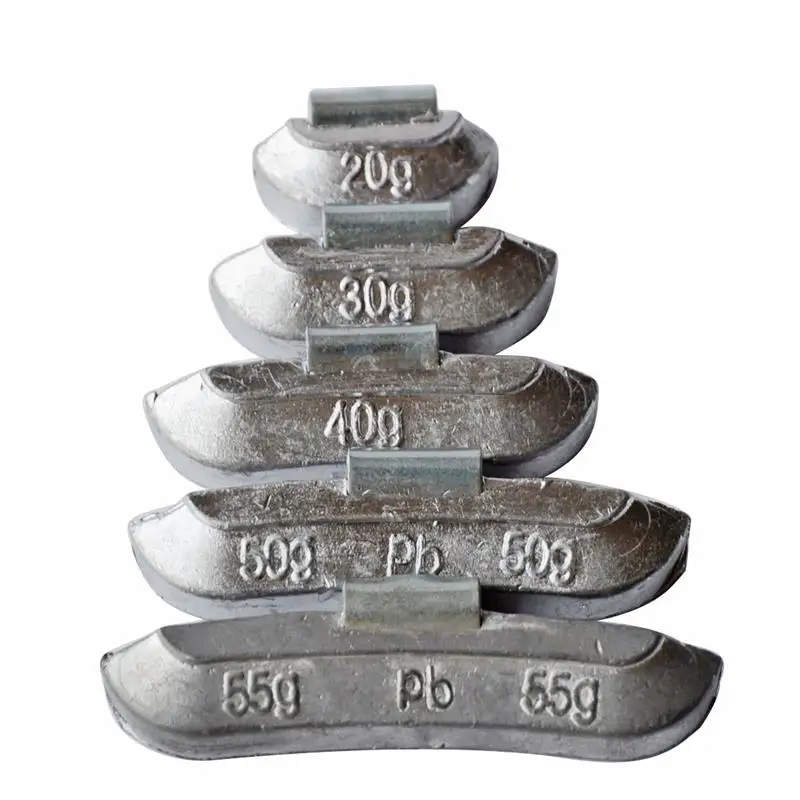
In any case, properly balanced wheels will avoid many problems in the future.
practice tires and wheels
Articles / Practice Half a liter, potatoes and mustard to taste: folk recipes for auto chemical substitutes In the current conditions, it is easy to close your eyes and imagine that all foreign manufacturers of auto chemical goods have left Russia for some reason. Well, or just mentally transport yourself to a few ten ... 411 0 one 21.10.2022
Articles / Electric car Expensive, dangerous and nowhere to charge: 5 main misconceptions that prevent you from buying an electric car Being afraid of something new is normal. Once upon a time, people were afraid of an injector or an automatic transmission, although now these units cannot scare anyone. Pretty much the same... 1930 5 0 21.10.2022
Once upon a time, people were afraid of an injector or an automatic transmission, although now these units cannot scare anyone. Pretty much the same... 1930 5 0 21.10.2022
Articles / Financial questions What cars can be bought under the state program of preferential lending and how much to save The market for new cars has been in crisis since March. Judge for yourself the rate of decline: in February, 121,442 new passenger cars were sold, and in May only 24,837. All this forced the governments ... 2405 0 one 19.10.2022
Test drives / Test drive Haval Dargo vs Mitsubishi Outlander: the dog is barking, the stranger is coming In the Haval dealership in the south of Moscow, life is in full swing: buyers look at cars, communicate with managers and sign some papers. While I was waiting for the test Dargo, the same cross... 14155 7 188 13.09.2022
While I was waiting for the test Dargo, the same cross... 14155 7 188 13.09.2022
Test drives / Test drive Motor from Mercedes, emblem from Renault, assembly from Dacia: test drive of the European Logan 1.0 It would seem that what's new can be told about the second generation Renault Logan, known to every Russian taxi driver, as they say, up and down? However, this car has... 12119 ten 41 08/13/2022
Test drives / Test drive Geely Coolray vs Haval Jolion: Free Cheese? If! Do you want to buy a car today with a full warranty, on credit at an adequate rate, without wild dealer markups? Now this is still a task, because a full-fledged chain of "representation - s.